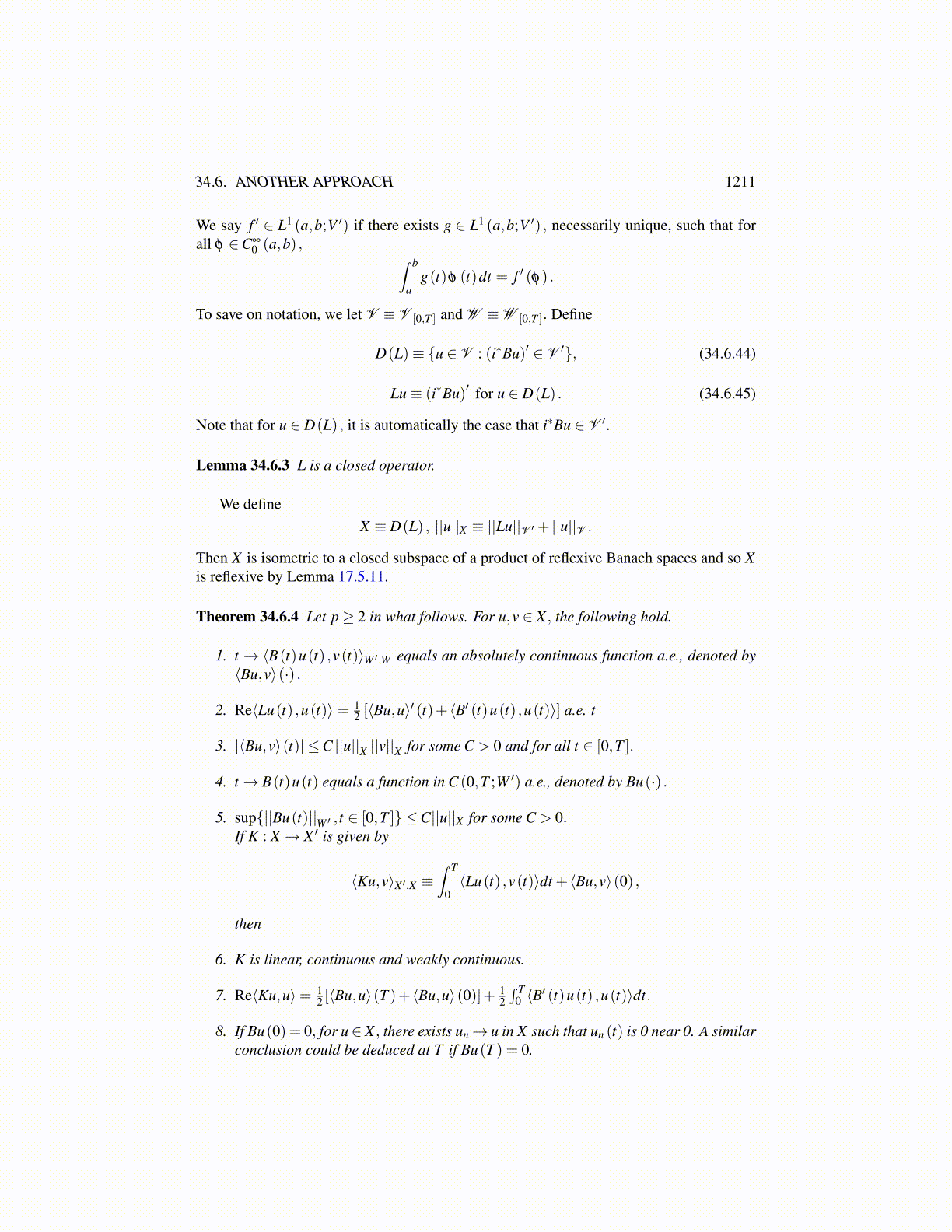
34.6. ANOTHER APPROACH 1211
We say f ′ ∈ L1 (a,b;V ′) if there exists g ∈ L1 (a,b;V ′) , necessarily unique, such that forall φ ∈C∞
0 (a,b) , ∫ b
ag(t)φ (t)dt = f ′ (φ) .
To save on notation, we let V ≡ V [0,T ] and W ≡W [0,T ]. Define
D(L)≡ {u ∈ V : (i∗Bu)′ ∈ V ′}, (34.6.44)
Lu≡ (i∗Bu)′ for u ∈ D(L) . (34.6.45)
Note that for u ∈ D(L) , it is automatically the case that i∗Bu ∈ V ′.
Lemma 34.6.3 L is a closed operator.
We defineX ≡ D(L) , ||u||X ≡ ||Lu||V ′ + ||u||V .
Then X is isometric to a closed subspace of a product of reflexive Banach spaces and so Xis reflexive by Lemma 17.5.11.
Theorem 34.6.4 Let p≥ 2 in what follows. For u,v ∈ X , the following hold.
1. t → ⟨B(t)u(t) ,v(t)⟩W ′,W equals an absolutely continuous function a.e., denoted by⟨Bu,v⟩(·) .
2. Re⟨Lu(t) ,u(t)⟩= 12 [⟨Bu,u⟩′ (t)+ ⟨B′ (t)u(t) ,u(t)⟩] a.e. t
3. |⟨Bu,v⟩(t)| ≤C ||u||X ||v||X for some C > 0 and for all t ∈ [0,T ].
4. t→ B(t)u(t) equals a function in C (0,T ;W ′) a.e., denoted by Bu(·) .
5. sup{||Bu(t)||W ′ , t ∈ [0,T ]} ≤C||u||X for some C > 0.If K : X → X ′ is given by
⟨Ku,v⟩X ′,X ≡∫ T
0⟨Lu(t) ,v(t)⟩dt + ⟨Bu,v⟩(0) ,
then
6. K is linear, continuous and weakly continuous.
7. Re⟨Ku,u⟩= 12 [⟨Bu,u⟩(T )+ ⟨Bu,u⟩(0)]+ 1
2∫ T
0 ⟨B′ (t)u(t) ,u(t)⟩dt.
8. If Bu(0) = 0, for u∈ X , there exists un→ u in X such that un (t) is 0 near 0. A similarconclusion could be deduced at T if Bu(T ) = 0.